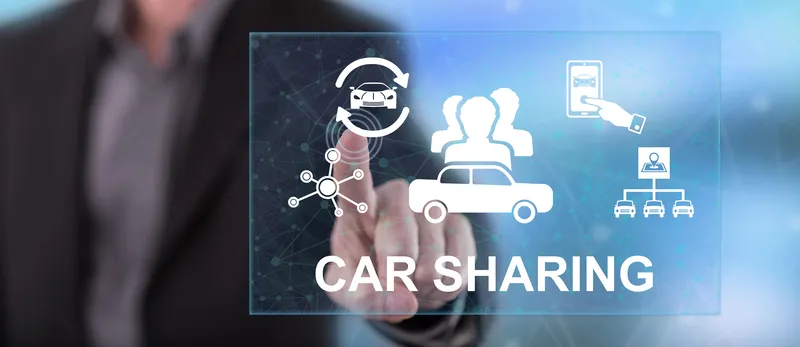The latest research from Lux Research indicates that automakers and technology developers are closer than ever to bringing self-driving cars to market, with basic Level 2 autonomous behaviour already coming to market, in the form of relatively modest self-driving features like adaptive cruise control, lane departure warning, and collision avoidance braking. With these initial steps, automakers are already on the road to some level of autonomy, but costs remain high in many cases.
It is the higher levels
May 22, 2014
Read time: 4 mins
The latest research from 3900 Lux Research indicates that automakers and technology developers are closer than ever to bringing self-driving cars to market, with basic Level 2 autonomous behaviour already coming to market, in the form of relatively modest self-driving features like adaptive cruise control, lane departure warning, and collision avoidance braking. With these initial steps, automakers are already on the road to some level of autonomy, but costs remain high in many cases.
It is the higher levels of autonomy that are grabbing the hype right now. Today, demonstrations of autonomous cars by the likes of1691 Google and 1685 Mercedes-Benz are technically impressive, but still depend on high-resolution special maps, are limited to certain routes and weather conditions, and need a trained professional driver behind the wheel. These Level 3 cars are at the forefront today. The future awaits a demonstrated truly autonomous Level 4 car, wherein fully autonomous driving is enabled in any environment and in all circumstances, without any driver input.
The present state of the technology combined with a vision of the future demands a pragmatic interpretation and a rational segmentation of the overall market value and the cost stack therein. Level 2 self-driving will increase from a small fraction of new cars sold today – about 3 per cent globally – to 57 per cent in 2020, and 92 per cent in 2030.
However, by that same year only 8 per cent of new cars sold will attain the reasonable capabilities of Level 3 autonomy, and no Level 4 fully autonomous cars will be available. By 2030 automakers will be able to capture profits of about US$9.3 billion from the emergence of autonomous vehicles, making this new technology an alluring proposition. However, Level 3 autonomy will be a premium option, opening the door to business model innovation if automakers hope to deploy it beyond some high-end vehicles.
More importantly for a wider set of market participants, self-driving technology will create a new opportunity for the automotive value chain, and bringing in outsiders to join incumbents looking to capitalise on a new market. Software will be the biggest autonomous vehicle value chain winner, with US$25 billion in revenues in 2030, a 28 per cent CAGR. This software will be largely invisible to the driver, operating behind the scenes as machine vision that brings sensor inputs together, and that uses artificial intelligence to determine a safe navigation path through the world. It will be a differentiated and high-stakes field, ripe for new partnerships beyond the conventional automotive value chain. Optical cameras and radar sensors will amount to US$8.7 billion and US$5.9 billion opportunities in 2020, respectively, thanks to Level 2 cars. However, because of the increasing complex processing requirements of Level 3 autonomy, in 2030 computers will be biggest hardware opportunity on-board autonomous cars, amounting to a US$13 billion opportunity.
Prospective suppliers in the value should anticipate significant changes both inside and outside the vehicle over time, inevitably creating opportunities for new entrants to shine. Inside the vehicle, decreased driver involvement will require high-end automakers to find new ways to differentiate amongst each other, based less on outright performance and sportiness, and more on luxury, technology, and the human-machine interface. In the foreseeable future, vehicles will be able to handle monotonous tasks. For example, to find a parking spot a driver would be able to get out of their car in front of their destination, and instruct the car to park itself nearby. The car would then safely proceed at low speed around the neighbourhood, looking for available parking spots. Infrastructure developers can enable this use case through deploying parking sensors and associated communication devices to detect when spots become available.
Opportunities abound, but as for the vehicles involved, rational navigation to the real market traction is required.
It is the higher levels of autonomy that are grabbing the hype right now. Today, demonstrations of autonomous cars by the likes of
The present state of the technology combined with a vision of the future demands a pragmatic interpretation and a rational segmentation of the overall market value and the cost stack therein. Level 2 self-driving will increase from a small fraction of new cars sold today – about 3 per cent globally – to 57 per cent in 2020, and 92 per cent in 2030.
However, by that same year only 8 per cent of new cars sold will attain the reasonable capabilities of Level 3 autonomy, and no Level 4 fully autonomous cars will be available. By 2030 automakers will be able to capture profits of about US$9.3 billion from the emergence of autonomous vehicles, making this new technology an alluring proposition. However, Level 3 autonomy will be a premium option, opening the door to business model innovation if automakers hope to deploy it beyond some high-end vehicles.
More importantly for a wider set of market participants, self-driving technology will create a new opportunity for the automotive value chain, and bringing in outsiders to join incumbents looking to capitalise on a new market. Software will be the biggest autonomous vehicle value chain winner, with US$25 billion in revenues in 2030, a 28 per cent CAGR. This software will be largely invisible to the driver, operating behind the scenes as machine vision that brings sensor inputs together, and that uses artificial intelligence to determine a safe navigation path through the world. It will be a differentiated and high-stakes field, ripe for new partnerships beyond the conventional automotive value chain. Optical cameras and radar sensors will amount to US$8.7 billion and US$5.9 billion opportunities in 2020, respectively, thanks to Level 2 cars. However, because of the increasing complex processing requirements of Level 3 autonomy, in 2030 computers will be biggest hardware opportunity on-board autonomous cars, amounting to a US$13 billion opportunity.
Prospective suppliers in the value should anticipate significant changes both inside and outside the vehicle over time, inevitably creating opportunities for new entrants to shine. Inside the vehicle, decreased driver involvement will require high-end automakers to find new ways to differentiate amongst each other, based less on outright performance and sportiness, and more on luxury, technology, and the human-machine interface. In the foreseeable future, vehicles will be able to handle monotonous tasks. For example, to find a parking spot a driver would be able to get out of their car in front of their destination, and instruct the car to park itself nearby. The car would then safely proceed at low speed around the neighbourhood, looking for available parking spots. Infrastructure developers can enable this use case through deploying parking sensors and associated communication devices to detect when spots become available.
Opportunities abound, but as for the vehicles involved, rational navigation to the real market traction is required.










